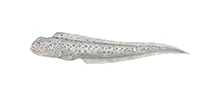Thank you for visiting the Seafood Selector. EDF is planning a new approach to providing information to consumers about good seafood choices. Please come back soon for updates.
Eels

Wolf eel, © Amadeo Bachar
Recommended servings per month
| Contaminant | Men | Women | Kids 6-12 | Kids 0-5 | |
|---|---|---|---|---|---|
| American eel | Mercury, *PCBs | 4+ | 4+ | 3 | 2 |
| European eel | Mercury, *PCBs | 3 | 4+ | 2 | 1 |
| Japanese eel | Unknown | 4+ | 4+ | 4+ | 4+ |
| Blackback flounder (US, Atlantic) | 4+ | 4+ | 4 | 4+ | |
| Arrowtooth flounder (US and Canada, Pacific) | 4+ | 4+ | 4+ | 4+ | |
| American conger eel | Mercury | 3 | 4 | 2 | 1 |
| European conger eel | Mercury | 3 | 4 | 2 | 1 |
| Freshwater eel | Unknown | 4 | 4 | 4 | 4 |
Eco details:
- Many eel species live in coastal and estuarine areas, where they may be exposed to water pollution caused by runoff and coastal development.
- Little is known about the environmental impacts associated with farming eels. However, eels are carnivorous, and raising one ton of eels requires roughly four tons of wild fish used as feed.




